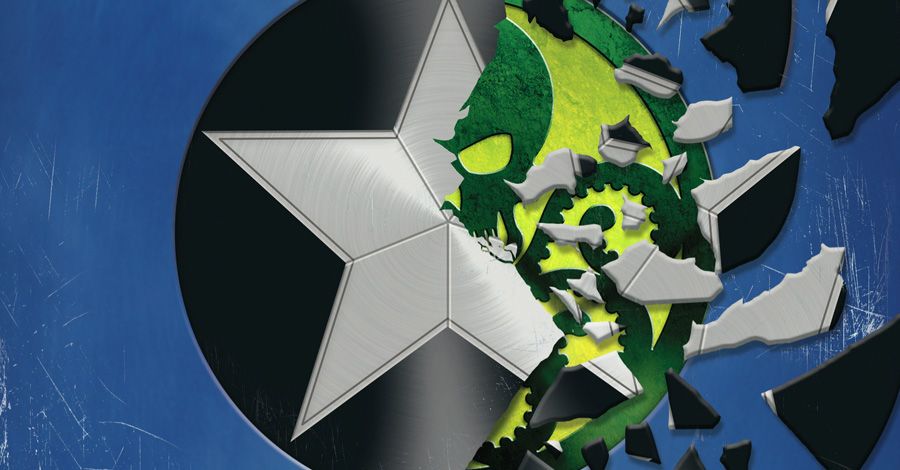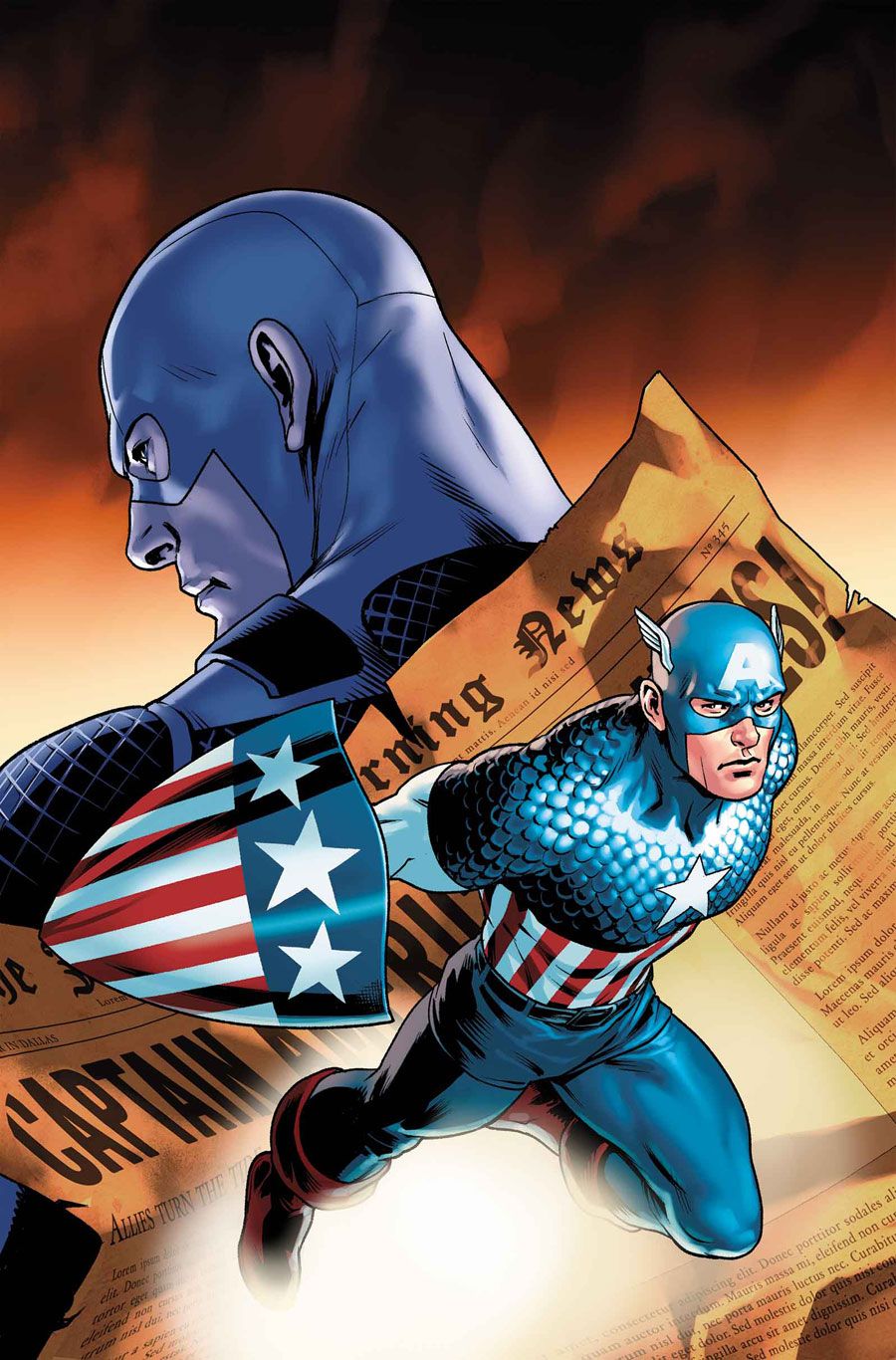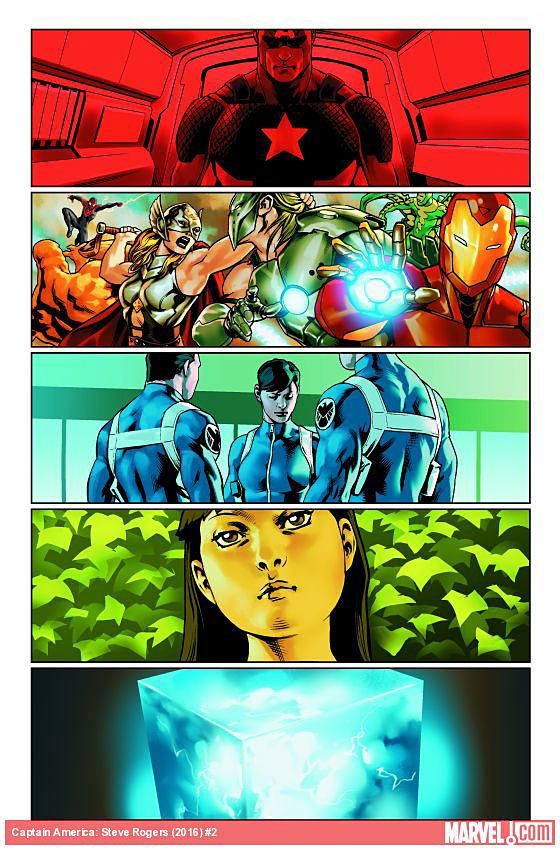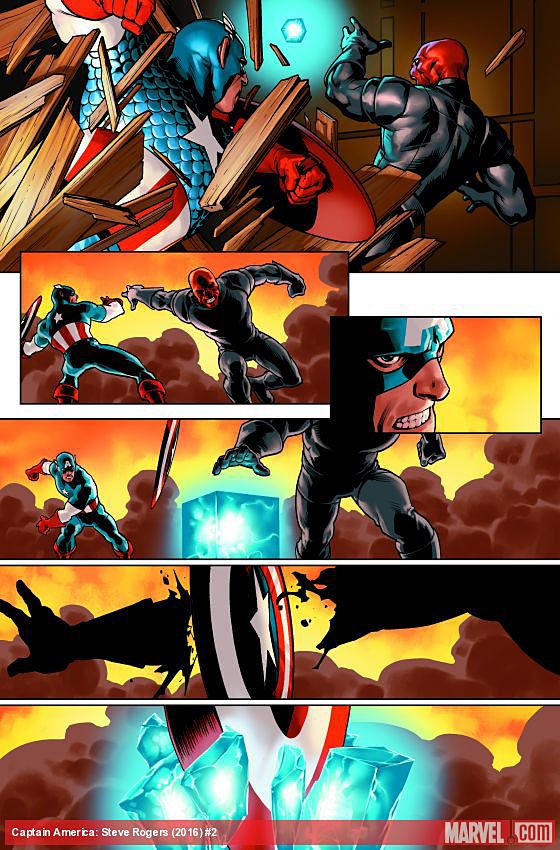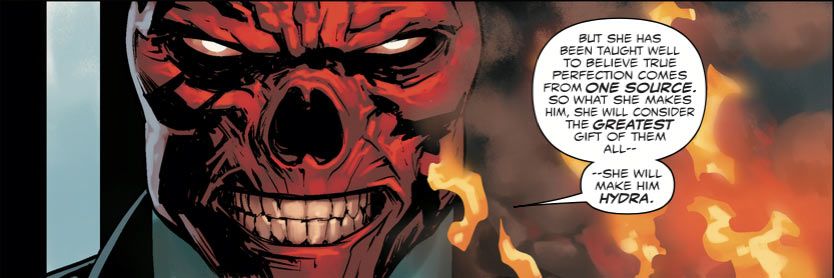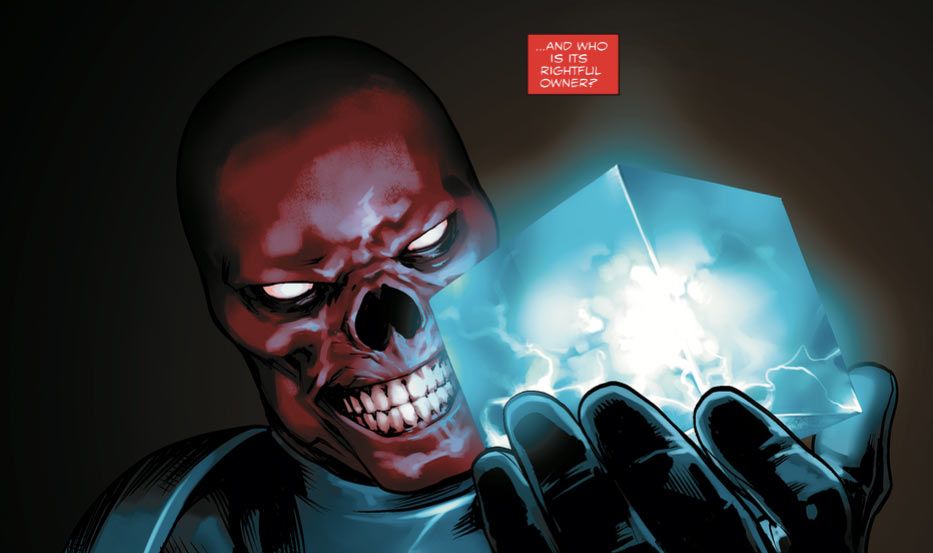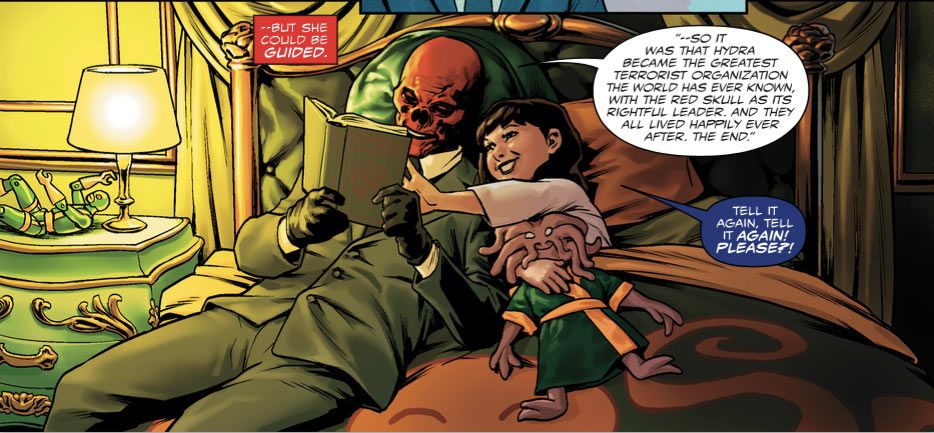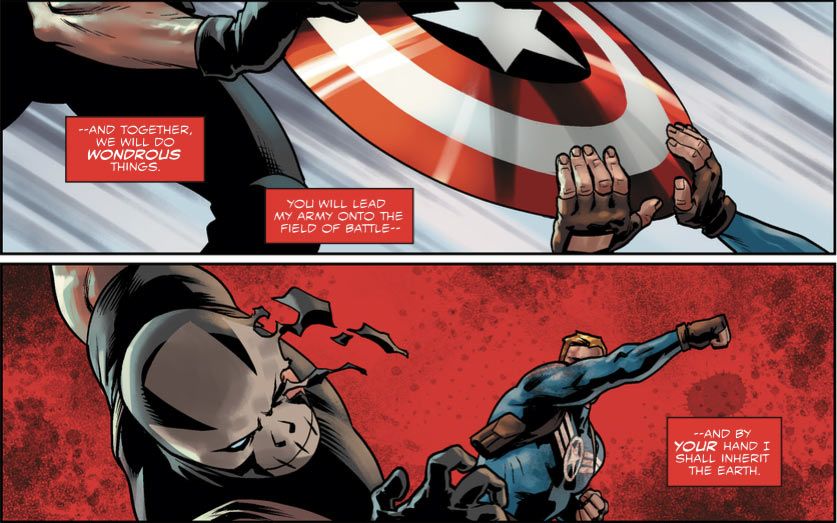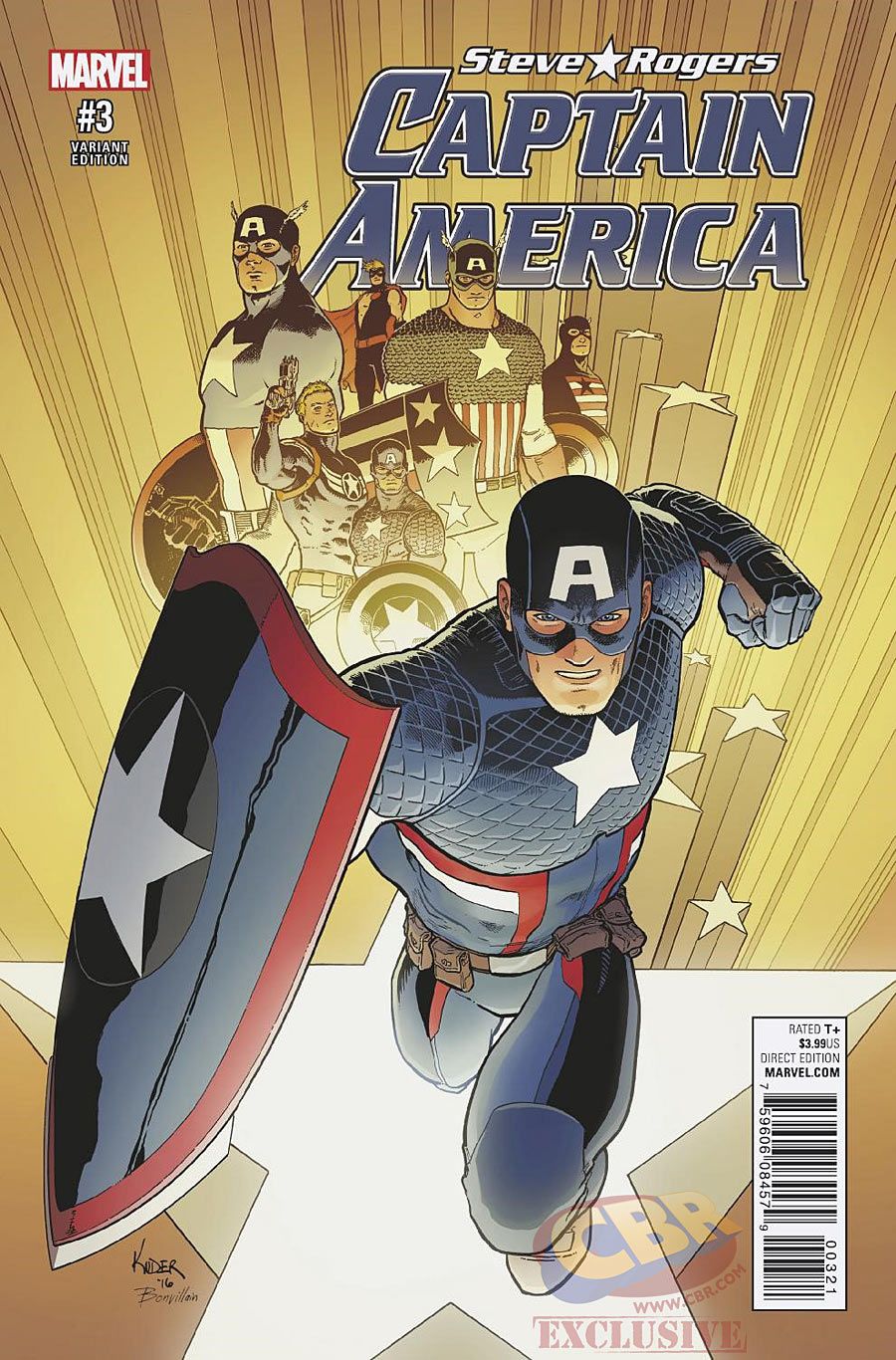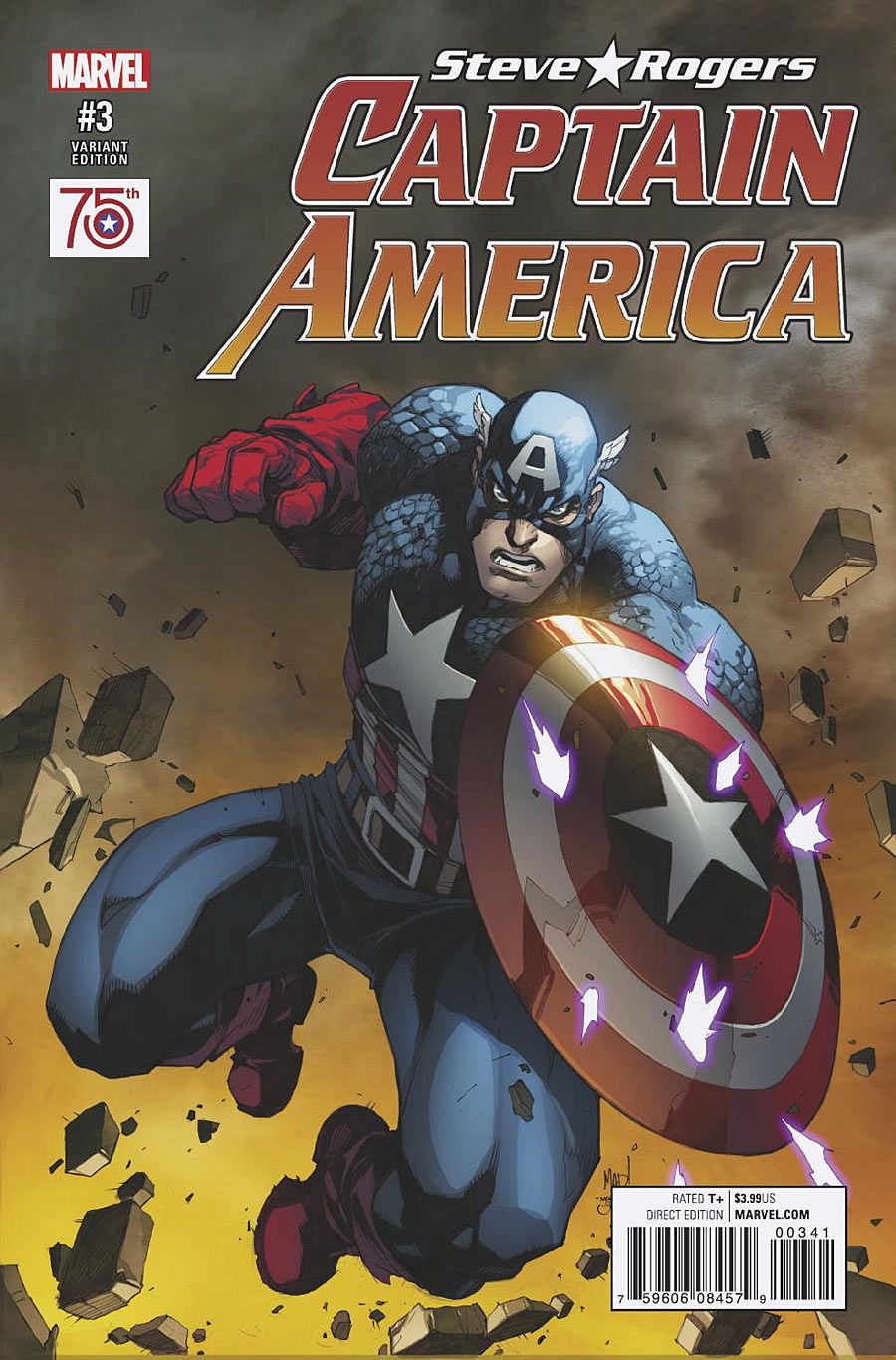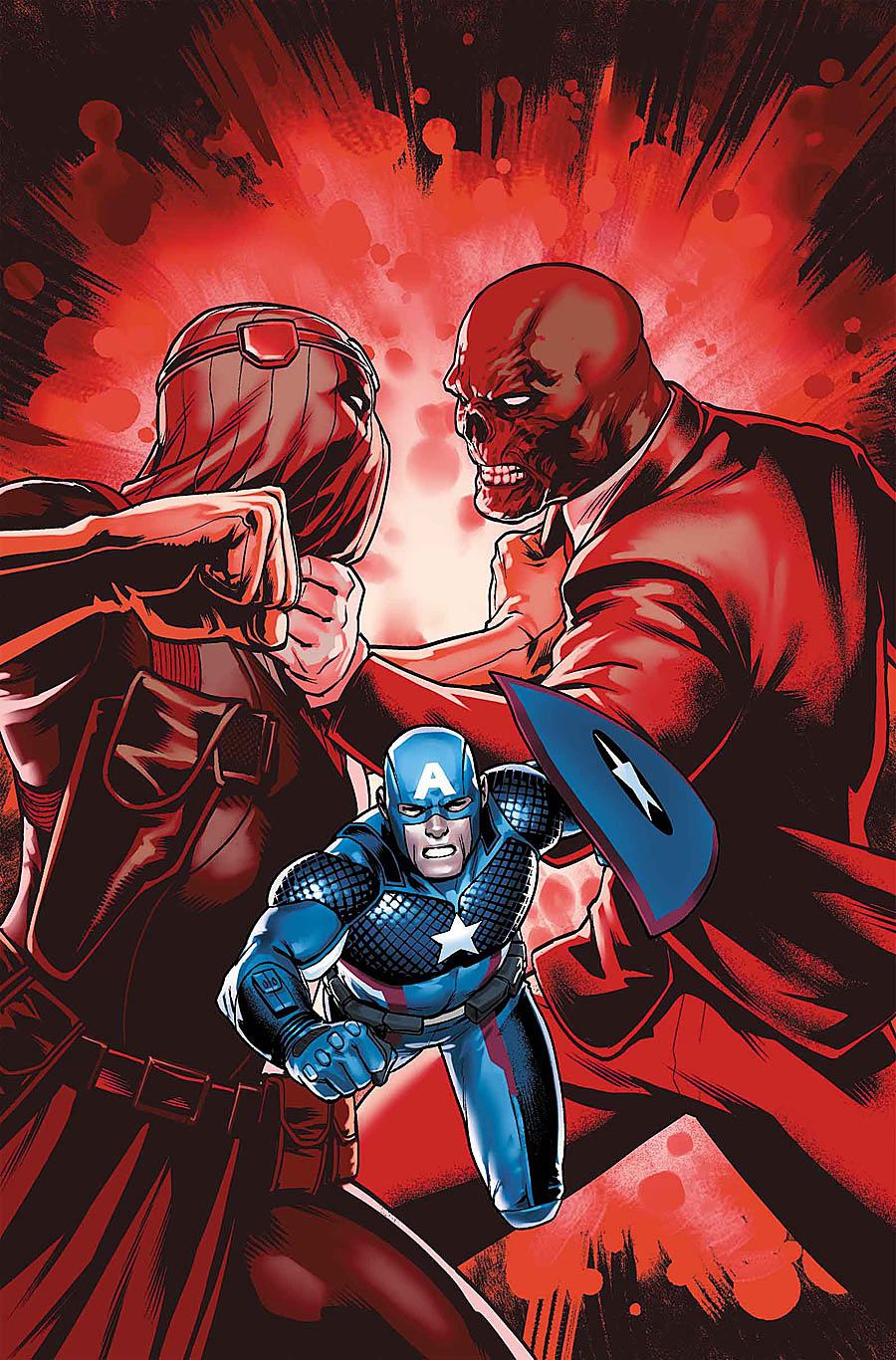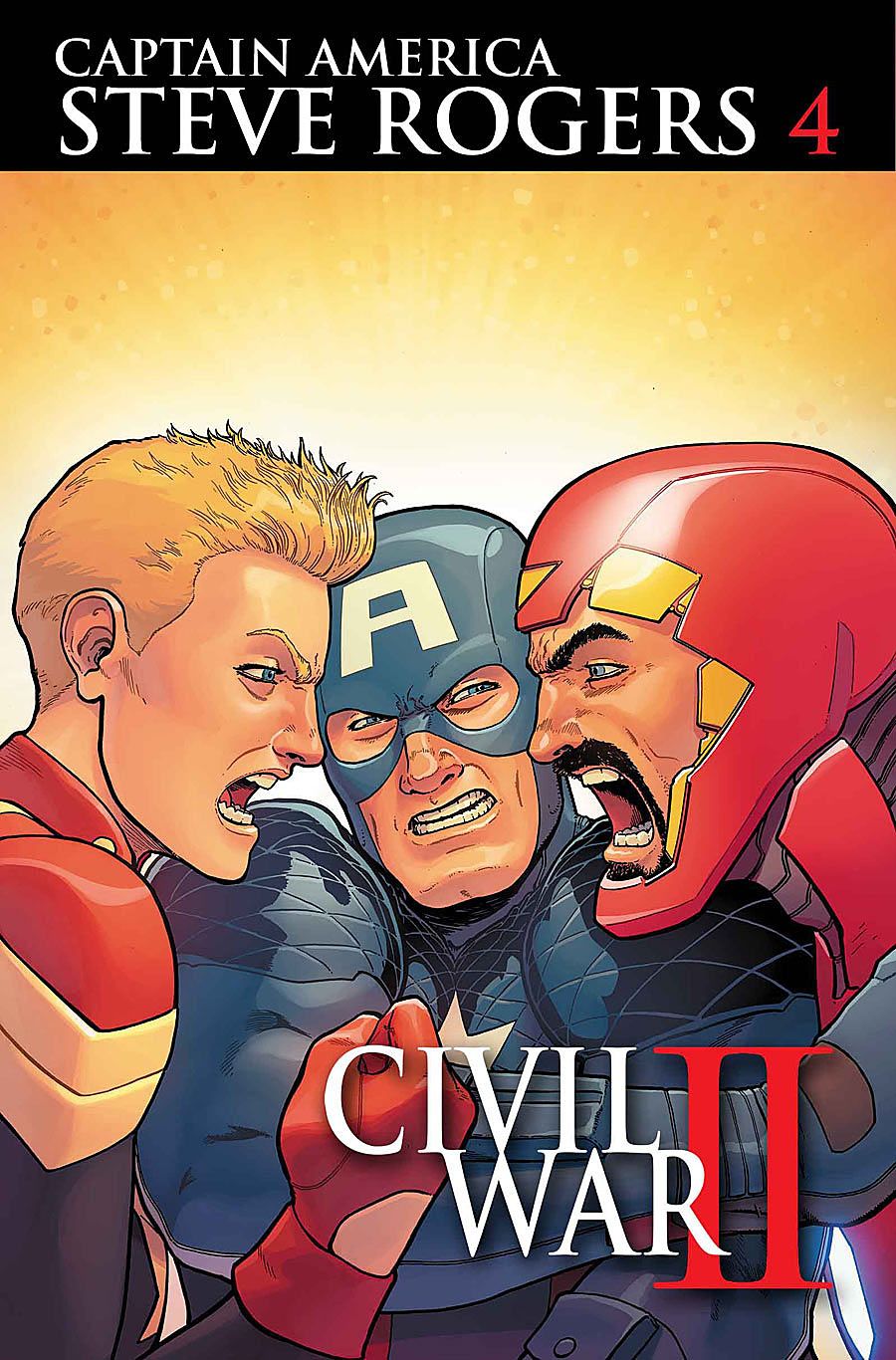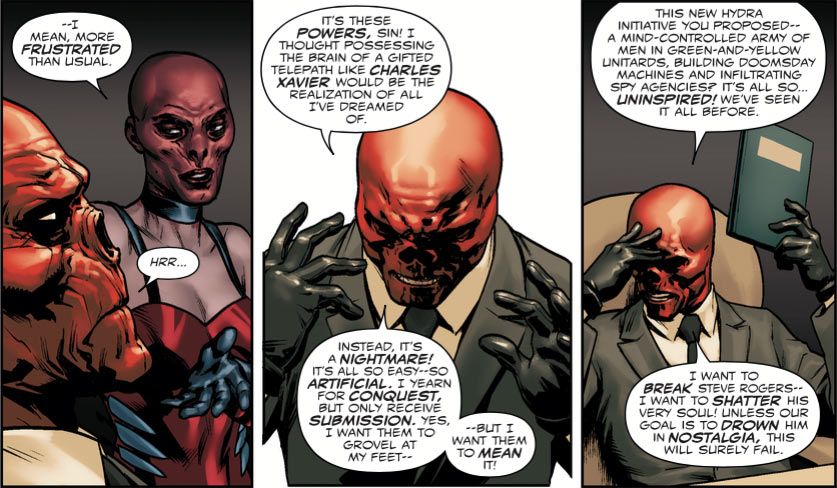SPOILER WARNING: This interview contains major spoilers for "Captain America: Steve Rogers" #2, on sale now.
In the aftermath of the recent "Avengers: Standoff" crossover, a rejuvenated Steve Rogers picked up a new shield and resumed his career as Captain America alongside his friend and former partner Sam Wilson (AKA the other Captain America). It was a moment many Marvel fans had been waiting for. It was also a perfect illustration of the adage about being careful what you wish for, because no one predicted what happened next.
In the debut issue of "Captain America: Steve Rogers," writer Nick Spencer and artist Jesus Saiz delivered a shocking twist when they revealed the original Captain America was secretly in league with the terrorist group Hydra. Rogers threw fellow hero Jack Flag out of an air transport and uttered the fearsome, familiar oath: "Hail Hydra."
RELATED: "Captain America: Steve Rogers" #2 Reveals Why Cap Hailed Hydra
While the controversial twist excited some readers, it also incensed others. Now that "Captain America: Steve Rogers" #2 is on sale, readers have the opportunity to see how Spencer and Saiz set up the how and why behind the shocking turn. The living Cosmic Cube fragment known as Kobik was, in fact, an ally of the Red Skull and when she restored Rogers' youth during "Standoff" she also altered reality to replaced his memories and transform him into a Hydra agent. CBR News spoke with Spencer prior to the issue's release about the twist, his inspiration for it and fandom's reaction to the initial Hydra reveal. The writer also discusses what Kobik's action means for the series, as well as other Marvel titles including "Captain America: Sam Wilson," "Thunderbolts" and "Civil War II" going forward.
CBR News: Were you surprised by how big the reaction to your first issue and its cliffhanger became?
Nick Spencer: For me the the worst thing would have been it not generating a massive fury. It's perfectly natural and normal for people to be upset about it. That was our intention, again we asked for it. I maybe didn't quite grasp the magnitude of it and how far it would reach outside of monthly comic readers. That's something that I maybe didn't give enough thought to, but it's great.

There was one guy who said he managed to avoid all the spoilers online, and rushed to his shop and grabbed the book. He then got back out to the car and had it ruined on the radio. So it's horrible, but then you think, "People are talking about this on the radio."
You don't get that many opportunities in this job to have something break that broadly. We were trending on Facebook, we were the top trending topic on Twitter for a while too. There are literally millions of social media posts about this. Chris Evans alone got like 85,000 retweets, which is awesome. Again, people being upset and shocked is a perfectly understandable response.
Given the uproar, how does it feel to finally have this issue almost in the hands of readers? How do you think they'll react to the explanation for what happened to Steve?
It's going to be really interesting to see the response. I'd be lying if I said I wasn't very eager to see how people will react to this.
We asked for the reaction to issue #1. We were the ones that decided to put the cliffhanger point where we did. So it's perfectly understandable for people to have been fired up and upset for that month. I might argue with how far it went or the intensity of some of it, [Laughs] but we certainly knew the shock and outrage was coming.
"Steve Rogers" #2 is full of big flashback reveals. Let's start off with the first one that showed a battle between Cap and the Red Skull wielding the Cosmic Cube that will create the Kobik fragment. Is this a specific Red Skull Cosmic Cube story you're referencing, because it looks to be from the Mark Waid-Ron Garney run on "Captain America"?
It is. That is one of my favorite Cap stories from the Waid-Garney run, which was a fantastic one. I'm kind of eternally grateful that they left a little mess on the floor.
So we got to do a nice bit of callback to a classic Cap story, and it was really funny because the whole time that we were setting up Kobik and going through "Avengers: Standoff" I paid a lot of attention to discussion around the books, and I really did not ever see anyone ask where the Cube fragments came from. That was something I was always waiting to hear, and it never came. So it was nice that the audience reflected the same blind spot as the heroes.
Given Kobik's ties to the Red Skull, it definitely feels like this is your take on a nature vs. nurture story with a classic sci-fi twist.
Definitely. What we're essentially saying in this issue is that interaction with the Skull was sort of a nascent experience. It was very much a formative moment for her. And who the Cube interacts with plays a fundamental role in how the Cube is shaped.
A big part of Cosmic Cube history is they evolve and become sentient. So I thought a nice twist on that would be is that like any birth it's greatly impacted by the parents. So I thought who was wielding that cube when it started its evolutionary process would be a pretty important thing for it.
What was it like writing the Red Skull as a doting father figure to Kobik? At one point we even see him read her a bedtime story!
That was fun. The Skull is a smart guy, and he recognized pretty quickly that he was not in a position to be authoritarian with Kobik. He understood the necessity of getting her on his side, and that required him to do some things that he's never had to do before and don't necessarily come easy to him like reading bedtime stories.
My favorite thing in that scene is Kobik's room and some of the Easter Eggs in it. I love the Hydra bed spread and the Hive stuffed animal that she's got. I thought that Jesus [Saiz] did a phenomenal job on the Hydra kid's room, which I really hope somebody does in real life. [Laughs]
I really liked what Jesus did with that scene as well. He seems to be really enjoying the action, emotions, and acting that are all key to a story like this.
Jesus is amazing and he's doing a phenomenal job on this book. I think it's his best work to date. I just got pages from him today and they're absolutely gorgeous. Every issue looks better than the last one. So I'm having a lot of fun working with him and I could not be more proud of how the book looks.
Kobik used her power to transform Steve into an agent of Hydra. That has me wondering -- what does Hydra mean to her?
I think that's a really important question to be asking as we go forward. The Red Skull has never really had that much of a connection to Hydra. He's sort of fluttered in and out of its existence from time to time. He's usually been a part of it when he's been able to co-opt it and shape it to fit his own agenda or to help his own plans. He's not a Hydra true believer.
It was just sort of a coincidence moment where Sin had proposed a Hydra initiative. She had been working with Zemo obviously when he had been running Hydra. It really was just at that moment in time Hydra was the easy thing for hm to direct Kobik toward.
So Kobik's idea of Hydra, her impression of Hydra, and her belief in what Hydra is is very much going to matter to the story going forward.
How exactly did Kobik alter Steve? Did she use her powers to implant a false history in his mind?
You just said a false history, and this is a big thing that I think we're going to have to be saying a lot over the next few weeks. Kobik rewrote reality. So it's not really false then, is it? [Laughs]
It can seem false to us in the sense that we as readers know another continuity. So this is another thing that we're going to be exploring, but it's important to understand that Steve is not brainwashed. He's not remembering things that didn't happen in that sense. This is Steve's reality. How that manifests and plays out remains to be seen, but the term "false memories" doesn't apply here.
So this is not something that Steve can willpower his way through. This is not something that Steve can fight back against. The reality of the Steve Rogers we know and love has essentially been wiped out. That is not a person that ever existed.
So this new history for Steve is something you're going to unveil over time?
Exactly. We started seeing that in the first issue.
Has the history of Hydra been rewritten as well? Because in issue #1 you suggested Steve's connection to Hydra dates back to the Great Depression, but if I remember correctly Baron Strucker didn't bring Hydra to Europe until the end of World War II.
Yes! There might be things that are very different then you might recall. The fun of a character like Kobik is there are no rules. She is capable of rewriting reality on a whim. So nothing is sacrosanct here.
And yes, with the first issue we had a lot of folks who were eager continuity experts pointing out that the timeline of Elisa Sinclair handing out Hydra pamphlets in the Lower East Side in the 1920s didn't quite match up with what knew before. So there's a lot to uncover there, and those flashbacks are going to be a key part of the book going forward.
You mentioned Steve not being able to undo what happened to him, and to me that suggests that the long form story you're telling is just as much about Steve's friends as it is about Steve himself.
In a lot of ways this story is really a Marvel Universe story in that so much of it is about how Steve is perceived; how he's looked at, the trust that's put in him, the moral authority that he has. Those are the kinds of things we'll be able to explore in this story by showing you the mirror opposite.
To me that was part of the fun. When the first issue came out you saw loads of people say that this was completely incompatible with who Steve Rogers is. Then they'd give you a long spiel on what Steve stands for, and that's really what the story is about. It shows you that in a way you've never seen before because you're seeing the broken reflection of that.
So this story will definitely impact the other Sentinel of Liberty book you're writing, "Captain America: Sam Wilson"?
It's going to have a major fundamental impact on Sam's book. One of my favorite things about this that I don't think people are talking about enough is what this does to Sam's status quo, and how much of this twist is payoff for him.
When Steve was restored to youth in "Standoff" lots of people were asking why Sam would even continue as Captain America? You had lots of people wondering if that book still had a purpose, whether or not it should still exist, and whether or not there would be fan and sales support for the book. Now that's completely changed.
There was a major push in the Marvel Universe for Sam to give back the shield and step aside. Now, we as the reader, know that would be a very terrible thing for him to do. That really is one of the things I'm most excited about in all of this; what it means for Sam.
Will this story also impact what Jim Zub and Jon Malin are doing over in "Thunderbolts," where Kobik is a cast member? How important and connected is the story that Jim and Jon are doing to the story you're telling here?
It's very, very important. It's so funny to me that every step of this before things happened we go around saying, "This is going to matter a lot. This is going to be really important." And at every step you're greeted with disbelief or either skepticism. Then people have to run back and catch up on things, and it's exactly the same thing with "Thunderbolts." The books are definitely going to connect up at key moments. The two books are going to have a big effect on each other, and if you're into this story I'd very much advise you to pick up "Thunderbolts," "Captain America: Sam Wilson," and "Uncanny Avengers." These are all books that are going to factor in a lot. "Civil War II" as well.
Can you talk at all about how "Civil War II" might play out in "Captain America: Steve Rogers"? How does Steve view the precognitive powers of the Inhuman known as Ulysses?
This is why I was so excited for the second issue to get out there, and for this part of the story to be kind of a closed chapter. One of the benefits of laying out everything that happened and showing all of our work up front is now we get you thinking about what's ahead rather than what happened before.
So in terms of "Civil War II" what I can tell you is that these two stories are intricately linked. They'll have major impacts on each other. Brian [Bendis] and I have been working very closely here to use both stories to our benefit. So you'll see this reflected in both in "Civil War II" in a major way and in "Captain America: Steve Rogers."
We have a couple of "Civil War II" tie-in issues that are very important to the book, and obviously if you are Steve and you are hiding in plain sight the way he is and you potentially have big plans for the future, having an Inhuman that can expose those plans at any time with a vision is a pretty scary thing. So Steve is definitely going to be taking an interest.
There's a Hitchcock vibe where we are going to see the nature of Steve's actions in away that the people around him do not. That applies to every appearance that Steve Rogers makes in the Marvel Universe. So every time he shows up anywhere you're going to have to keep this in mind. Hopefully it will have double the payoff that way.
It sounds like when it comes to the question of which side he's on, the answer for Steve will be simple -- his own.
[Laughs] Right. It was really perfect timing. When we came into the retreat and talked about "Civil War II" we talked about this story at the same time. So we were able to build the two together from the ground up, which mean there's cohesion here that you don't see all that often.
Now that we know a lot more about the story you're telling what can you tell us about the inspiration for it?
In response to the story people treated this like it was very much a new thing. Now that they know a little more about the story this is actually very familiar in some ways. The Skull's general M.O. is like this. On multiple occasions he's tried to use a Cosmic Cube to shape Steve's perceptions or to get Steve on his side. One of the Skull's biggest fixations is not so much defeating Captain America as it is getting Captain America under his wing. It's one of the strange dynamics of their relationship.
So in a lot of ways this is the Skull's dream come true. This is his greatest victory, but it's the kind of story we've seen all throughout their rivalry.
A story that I know influenced this and had a big impact on me when I was younger was the end of the John Walker saga in "Captain America"; when the Skull had his consciousness put in a body that looked like Steve Rogers. As a kid I had a visceral reaction to that. The idea of that was terrifying. So it stuck with me. It's one of my all-time favorite Cap stories. I know that on a certain level that story had a big influence on this one.
On some level I kind of understood the power of somebody looking like Steve Rogers being the opposite of everything that Steve stands for. It's a pretty powerful thing and I think that story certainly got me to an understanding of that.
Going back to what you said about the Skull's desire to bend Steve so he agrees with his will, it's interesting that he enacts this plan when he has a way to do that directly with the powers he gained from Charles Xavier's brain.
Right, the Skull is a bigger threat than ever because he has Xavier's brain and has now become one of the world's greatest telepaths. We've talked a lot in the story about how the Skull is reticent to use those powers on the scale that they could be used.
I thought there was a certain delicious irony in him getting that ability and having no use for it. It rang true to that he would not want that sort of insincere accommodation; that when he got submissions he would really want them to mean it. So while the Skull is not using his powers to build up the new Hydra and didn't use them to change Steve's situation he's still very much capable of using them when he needs to. That makes him incredibly dangerous to everyone in the story.
Finally, one major player we haven't talked about yet is Baron Zemo and where he fits in Kobik, Steve and the Skull's conception of Hydra.
You really should keep an eye on Zemo. He's a character that's near and dear to my heart. He does have a rough road in front of him though. So maybe people shouldn't get too attached or get their hopes up too high. [Laughs]
For "Captain America: Steve Rogers" #3 I understand we're going to jump forward in time and you're going to pick things up immediately after #1's cliffhanger, correct?
Yeah, obviously we did this interlude in issue #2 to really show our work and make very, very clear what the situation is. Now we'll jump right to where were were at the end of issue #1.
Our characters were obviously in the thick of it in Bagalia. So we'll get to see that. We'll get to see more of Elisa Sinclair and we'll get to learn a little more about Steve's current state of mind.
"Captain America: Steve Rogers" #2 is on sale now from Marvel Comics.

